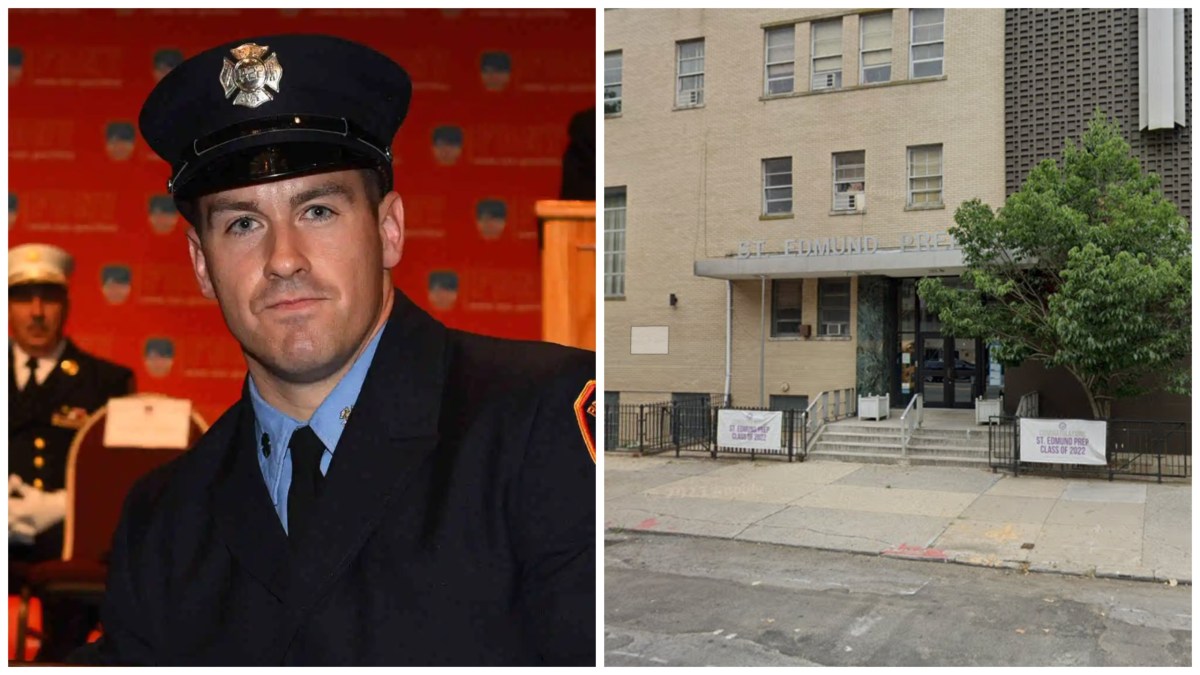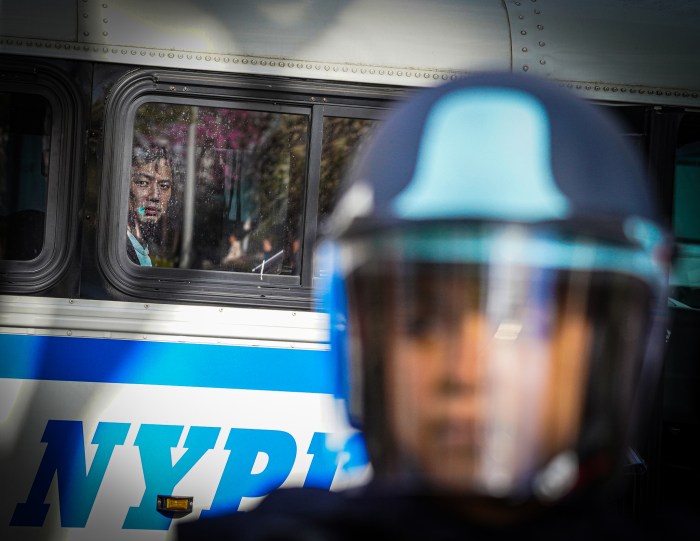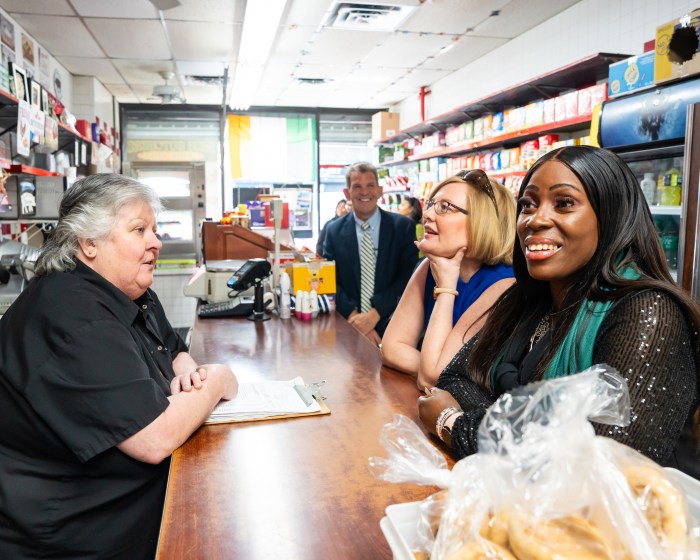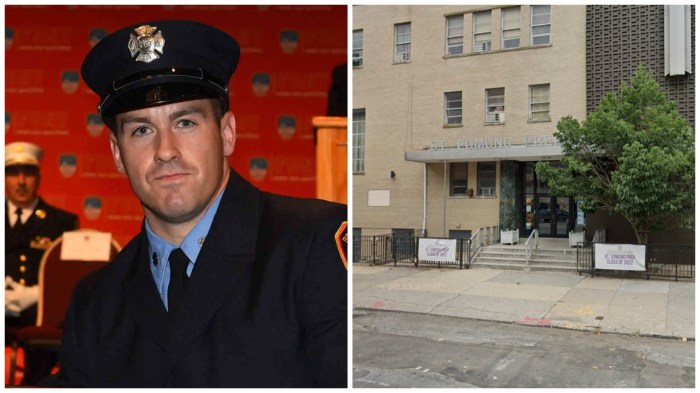
One youthful mistake that leads to a jail sentence can ruin a teenager’s future: young people miss out on valuable school time, and, with a criminal record, potential job opportunities can evaporate.
Angel Rodriguez is the executive director of Avenues for Justice, a court advocacy program dedicated to rescuing New Yorkers in their teens and early 20s from the soul-crushing spiral of incarceration. As such, Rodriguez, 62, has made it his life’s mission to help misguided youth get their lives back on a productive and successful track before it’s too late.
“Many of them don’t have a real chance or opportunity to be heard in the criminal justice system,” Rodriguez explained.
To that end, AFJ negotiates an alternative to jail. The goal is to work out a disposition for the young offenders, to pull them out of the system and have them be granted probation and supervision instead of time in the lockup.

In a warren of offices on the 15th floor of the Manhattan Criminal Courts building, Rodriguez waits for a call that could come from a lawyer, an assistant district attorney, a police officer or even from a young defendant ready to surrender.
“We are involved sometimes before the case goes into the system,” Rodriguez said. “I engage in cases at any given point, sometimes before the arrest is made. Then I appear at the arraignment. And then our work begins to intake the kid.
“When we intake these young people, we try to figure out what the common denominator is that brought them in. We gather as much information as we can about the case and the person to create a custom plan. Is it a drug problem, is it a psych problem?”
Young people diverted from jail to AFJ spend up to five evenings per week at one of the program’s two locations in the East Village or Harlem where they receive counseling. They can study computer coding, practice art therapy and even do their school homework. Lawyers and social workers stop by to give lectures. There are sessions on sex education. Job readiness classes teach how to create a resume and dress for success. And to reinforce the feeling they’re not alone, everyone gathers for a full family-style dinner once a week.
In the 1970s, Rodriguez, a Lower East Sider, was working at a downtown Boys Club. His friend, Robert Siegal was studying political science at NYU. On a daily basis both men saw the hopelessness facing the youth of the neighborhood. Around that time, they became acquainted with a 9th Precinct police officer, Andrew Glover, who was also striving to help young people avoid damaged futures. Tragically, Officer Glover was killed by a gang member in 1975 at age 34.

In 1979, inspired by Officer Glover’s dedication, Rodriguez and Siegal created an organization to offer young people an alternative pathway away from the oppressive prison system and lead them on to rewarding lives. They named it the Andrew Glover Youth Program. Today it bears the familiar title Avenues for Justice.
“At that time kids would go before any judges,” Rodriguez recalled. “Some of these judges were monsters, not equipped to deal with kids. That’s why we lobbied to create a comprehensive youth (court) where all kids would go before one youth judge who would understand them.”
In the then-decimated East Village, Rodriguez found a city-owned building on Avenue B near Fifth Street that was being used — for all practical purposes — as a drug den. Rodriguez negotiated a long-term lease at $25 a month. He soon bought the building and began renovations. Unfortunately, Siegal died of an untreated medical condition in 1979. Undeterred, Rodriguez plowed ahead with their mission.
“Robert and I for a long time were a two-man organization that today stands for impacting our city as we provide opportunities for young people, trying to work out dispositions for kids making our communities and city safer by pulling them out of the system and making sure they don’t come back but move on to productive lives,” Rodriguez said.
Today the East Village space houses a computer room, a full kitchen and a basement area for various creative activities.
Last week Felipe Monsegur, 21, sat in front of a row of computers on the building’s top floor. Monsegur, whose first name is a pseudonym, had been charged with robbery when he was 18.
“The lack of structure in my household, that’s the reason I was referred to this program,” he said. His robbery charge was reduced to attempted robbery and, after a month in Rikers Island, his parole officer referred him to AFJ.
For the past year Monsegur has attended AFJ three or four times a week. Currently he is working an internship as an outreach worker for a safe sex group.
“I feel more like being at home (here) than at home in my house. The trust, the respect,” Monsegur said.
Thomas Johnson, 20, has attended the AFJ program for almost two years. After an arrest for attempted robbery when he was 17, Johnson, whose first name is also a pseudonym, was diverted to AFJ.
“(It’s) put me in a better position, helped me get back to school. If I was never in this program I would never have gotten my GED, or any education, to be honest.” he said. Johnson hopes to be a computer programmer someday, “because that’s where the money’s at.”
State Supreme Court Justice Maxwell Wiley, on the bench since 2003, has frequently presided over cases of youthful offenders, many of whom were charged with crimes that could have landed them in state prison.
“With teenagers there was a presumption; let’s see if there’s a way he can stay out of state prison,” Wiley said.
As an assistant district attorney, Wiley first met up with Rodriguez in the 1990s.
“Back then, I think there was a much less systematic approach to youthful offenders,” Wiley recalled.
When Wiley had his first youthful offender case, Rodriguez appeared in the courtroom.
“He seemed to have this way of even knowing when the cases popped up. He was very proactive. He really has a talent for figuring out why a kid got in the spot that the kid is in, and what can be done to address the kid’s issues," Wiley remembered. "As a judge, when I would deal with kids who had been charged with violent crimes, the big issue was always balancing public safety against the rehabilitation of the kid.”
Describing the work of AFJ, Wiley said it’s critical the state gives teens a change to get onto a different path.
“Is it a benefit to the state? I think it’s a necessity,” Wiley concluded.
Correction: An earlier version of this story should have noted that the program was founded in 1979.

















